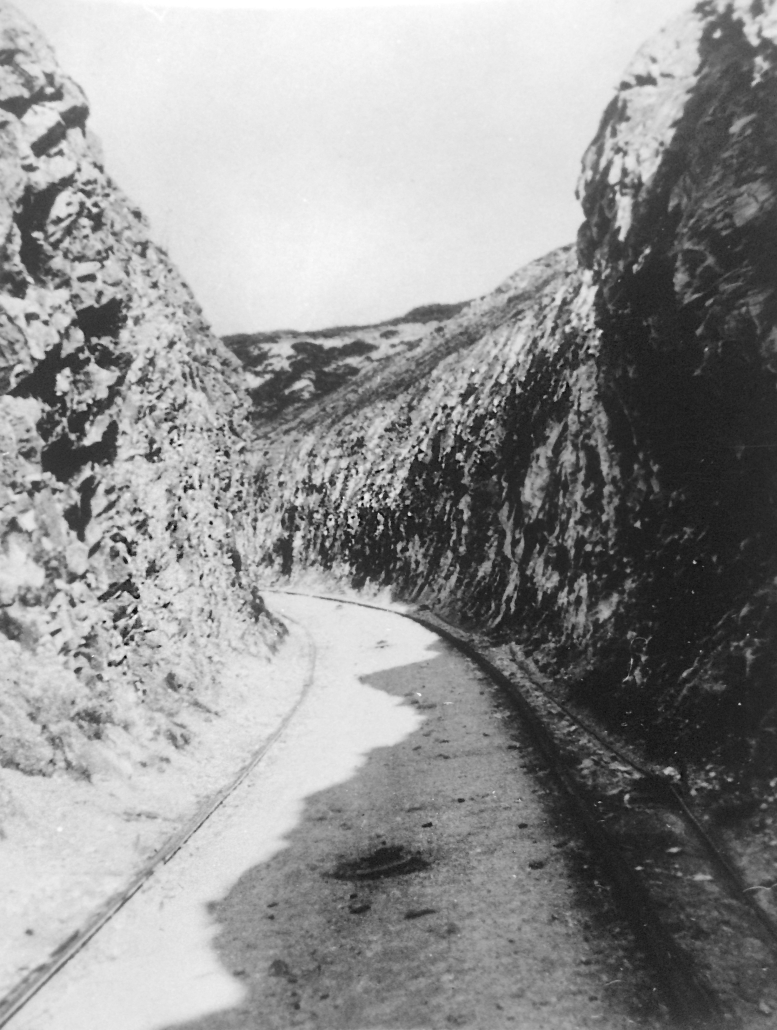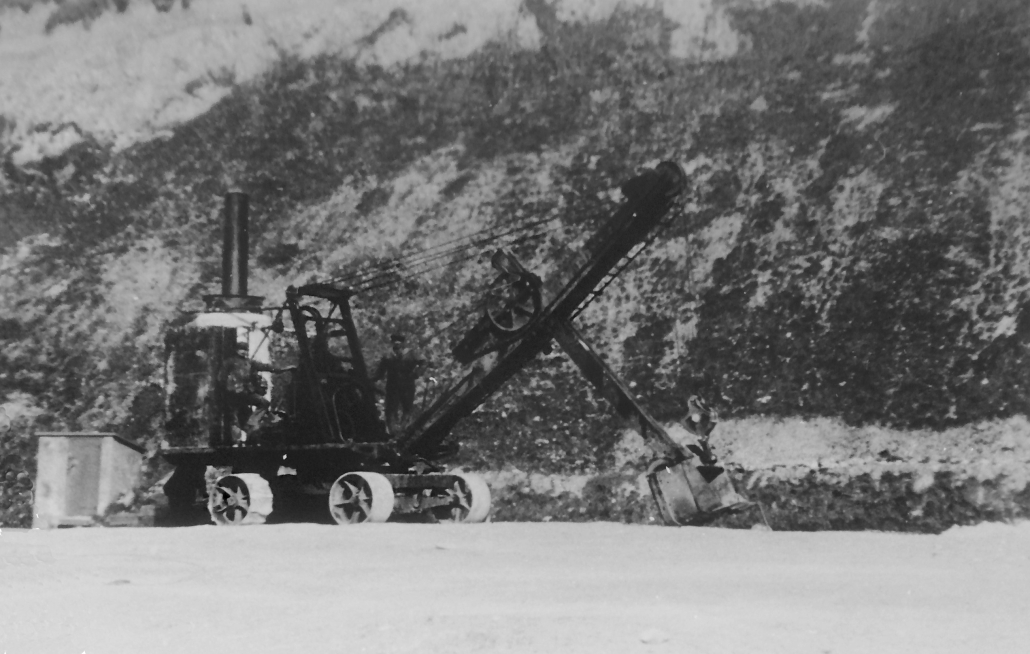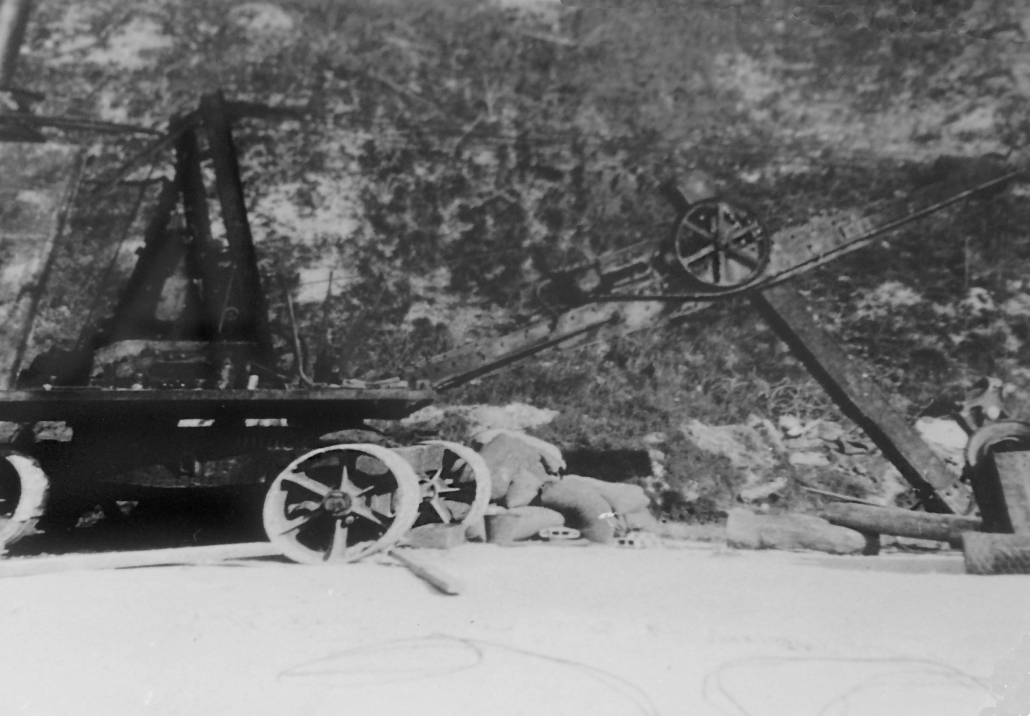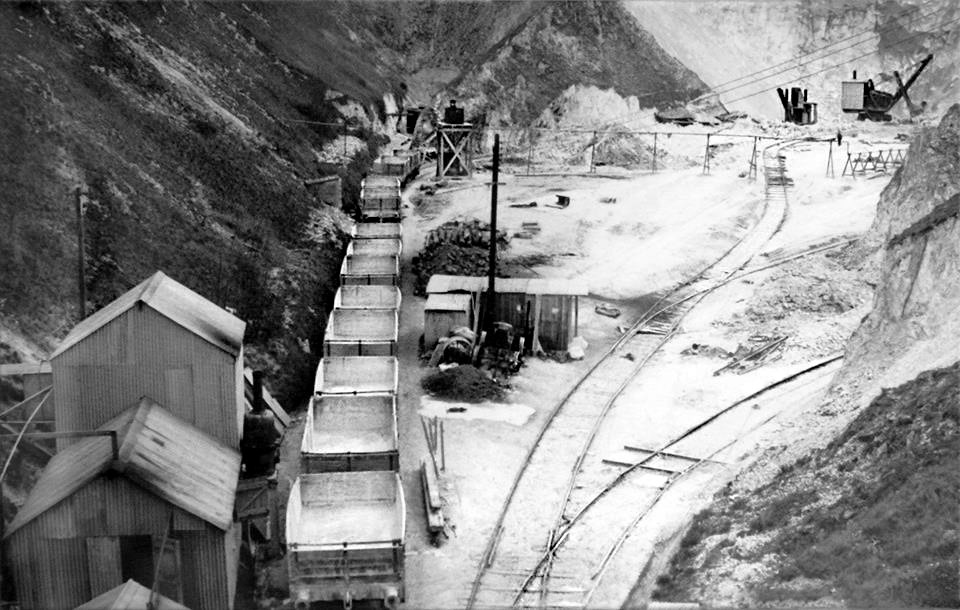Shide Chalk Pit Heritage

Shide Chalk Pit Local Nature Reserve owes its existence to the cement industry and the coming of the railway in Victorian times. The site now occupied by Vestas at the bottom of Stag Lane was once home to the West Medina Cement Mills where thousands of tons of chalk was crushed every month and burnt with clay to make Portland cement.
Find out more about West Medina Mills
The chalk was brought in by river from the mainland but the arrival of the Newport to Sandown railway line meant that chalk could now be obtained locally. Shide station on the line was just a stone’s throw away from an existing chalk quarry and during the summer of 1895 a deep cutting and short tunnel under Pan Lane was blasted through into the pit allowing a branch line to be laid from the station into the quarry. Soon, chalk trains, made up of nine or ten trucks, were shifting 30,000 tons of chalk a year to the mills. The trains left the quarry to run down into Shide station and from there were hauled to the Cement Mill, a journey of just over two miles. In 1913, 40,000 tons of chalk were blasted out of the quarry but by 1937 that figure had risen to 50,000 tons a month.



In August of that year, the Southern Railway Magazine ran a feature on the busy line, which was re-printed by the County Press under the headline ‘Isle Of Wight Cement Train’ : ‘If a prize were presented for the neatest train on the Southern Railway it would be won by the Isle of Wight cement train. With its little green ‘Terrier’ locomotive, and string of yellow and blue trucks, this train is the most pleasing sight in the Island… The Terrier engine is spotlessly clean, and the wagons no less so, their contents of chalk, seen in the midday sun, are as white as a newly washed sheet. This little train confines itself to the two miles between the pits at Shide and the mills on the Medina river and shows its exclusiveness in travelling backwards through Newport station on its way to the mills for there is no run-round there. The mill consumes 50,000 tons of chalk each month, conveyed in some 6000 wagon loads, working three trips each day.’

Sadly, it was not to last. In 1944, Associated Portland Cement Manufacturers Ltd, owners of West Medina Cement Mills, announced that after nearly 100 years, production of cement at Dodnor would cease and the plant was closed. There were moves to to re-open the mills but in 1946 the Chamber of Commerce threw in the towel, the CP reporting, ‘The Chamber of Commerce said there seemed little hope of the Cement Mills being reopened. – Sir Vere Hobart said it was a monstrous thing that one of the major industries of the area should be restricted in this way. At one time the mills employed 100 men, many of whom, now returning from the war, were without employment.’
Following closure, the site then became a distribution centre for the Blue Circle cement company.
In 1952 it was proposed that the quarry should become a refuse tip. Luckily, the proposal was thrown out by the County Council, due to “the amount of stench which would emanate from the tip.”
In 1967, Cheeks were persuaded to buy the quarry as a suitable base for their operations, having been told by the chairman of the Planning Committee that planning permission was a foregone conclusion. It wasn’t. Due to public opposition, planning permission was refused, leaving Cheeks the owner of a white elephant.
By 1983 the pit had passed into council ownership and in a far sighted move, Stephen Ross, the Island’s MP and leader of the County Council, authorised the spending of £1000 to transform the pit into a wildlife refuge.
Want to learn more?
The story of quarrying on St Georges Down
Alan Stroud has kindly supplied copy for this page. Pictures are courtesy of Alan Stroud, Alan Dinnis and the Isle of Wight County Press.
